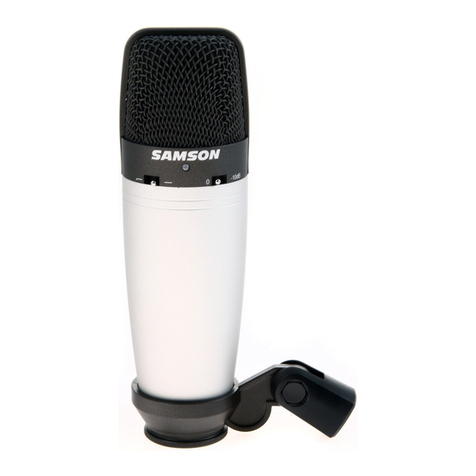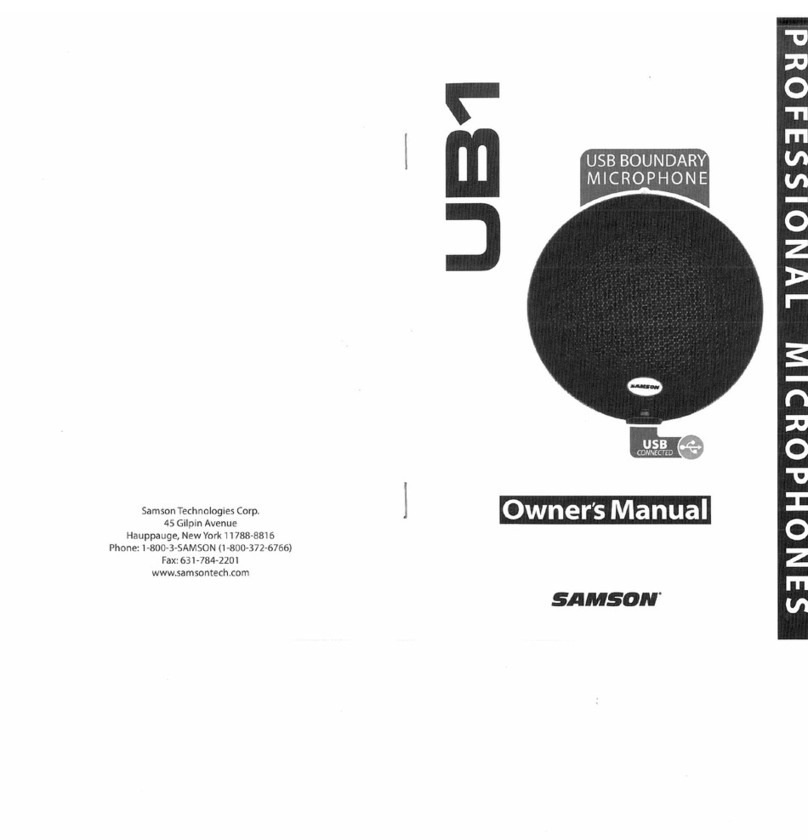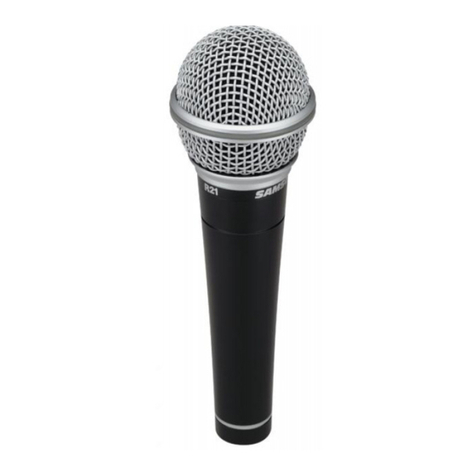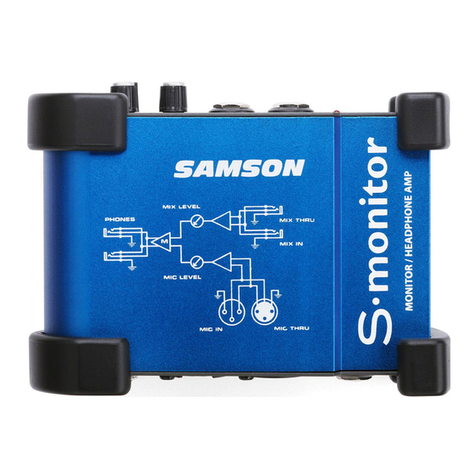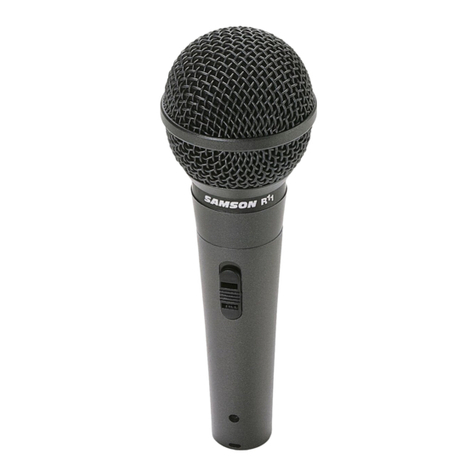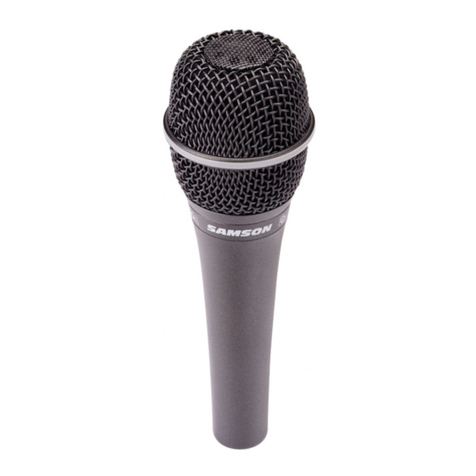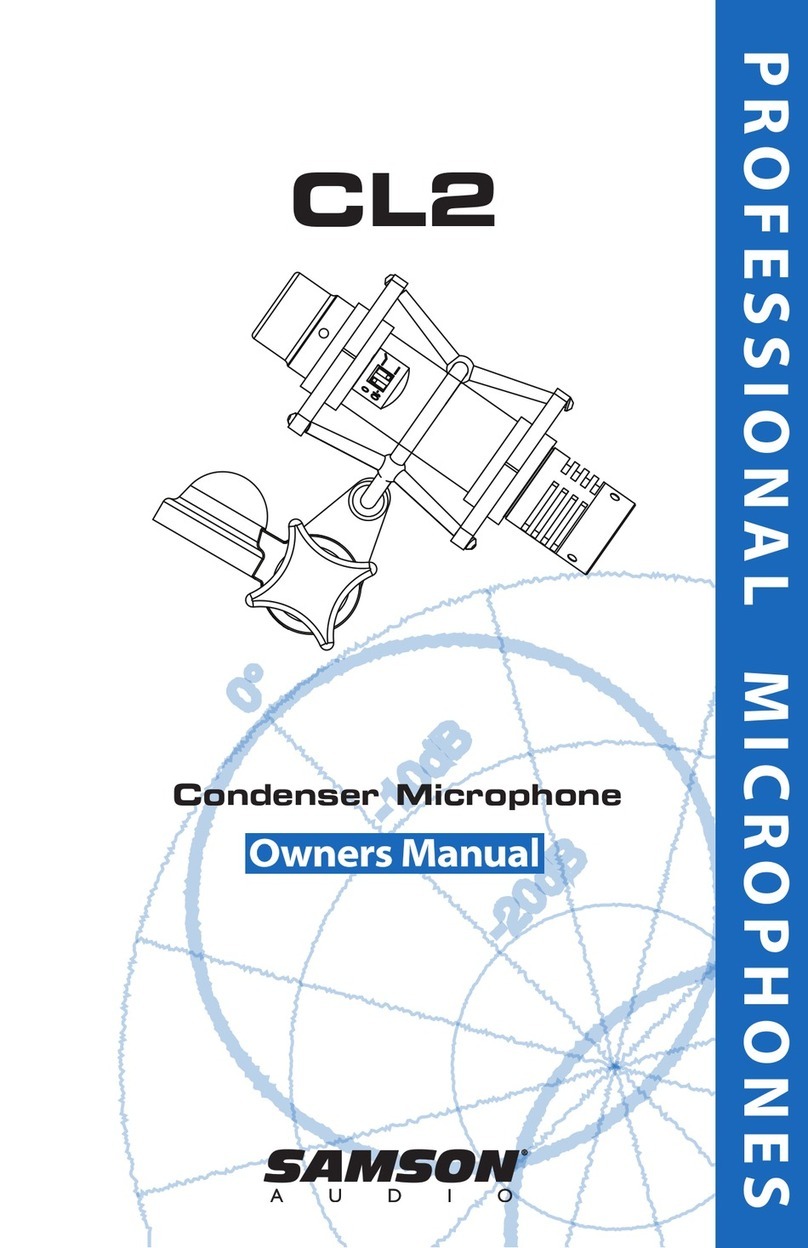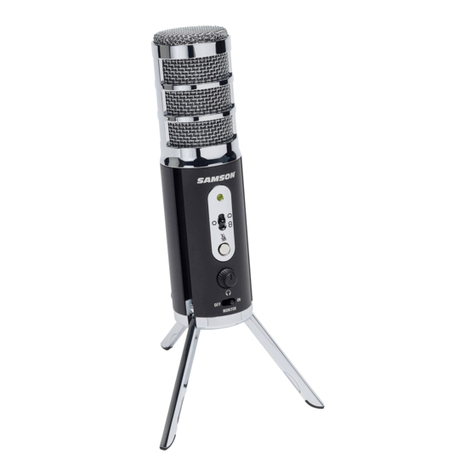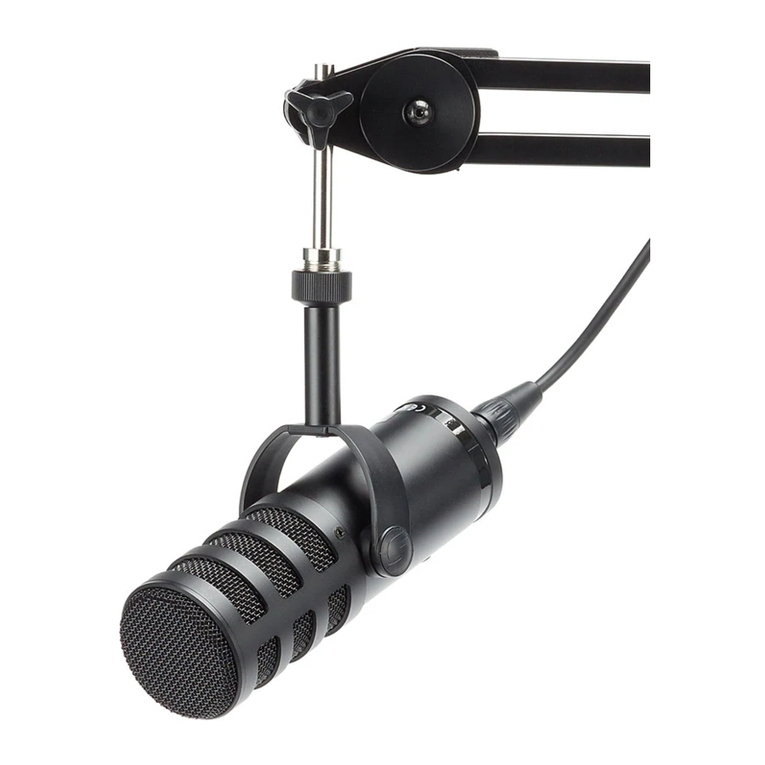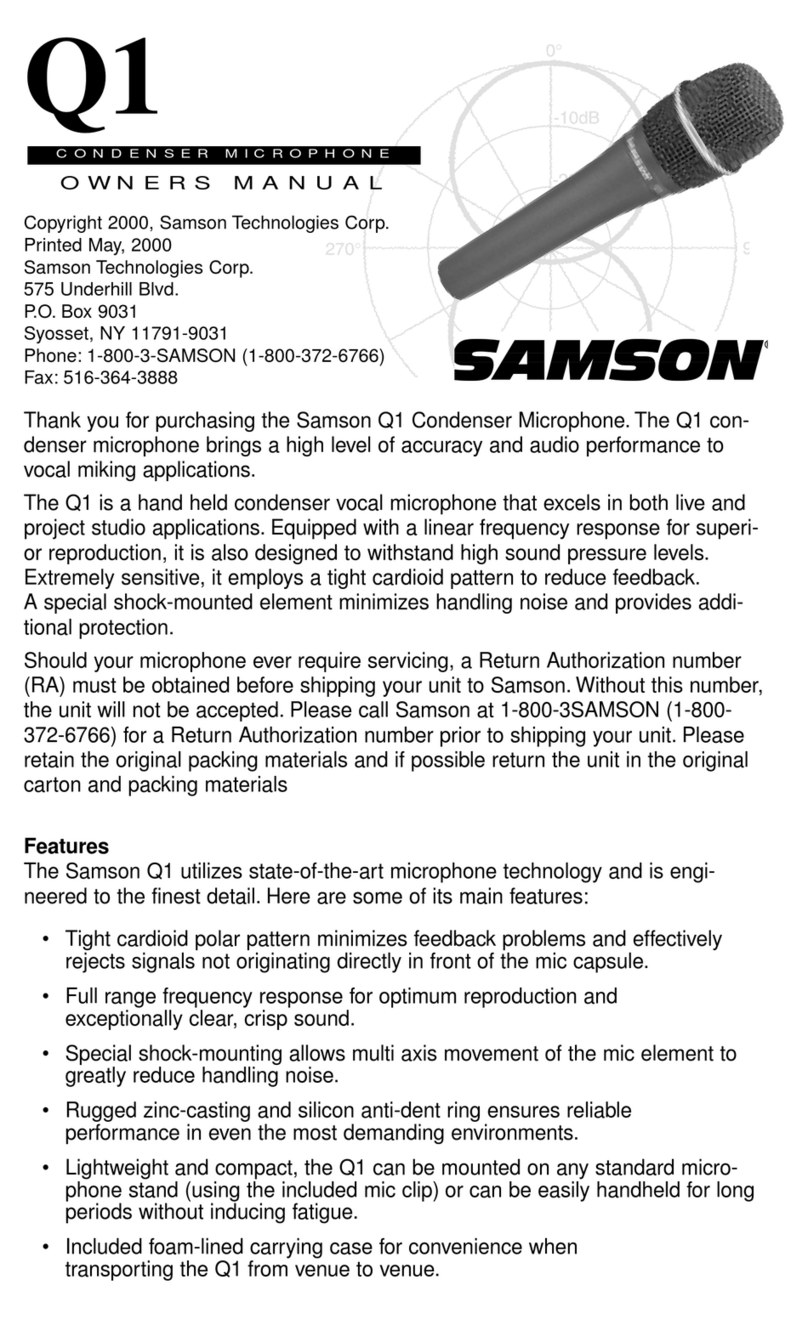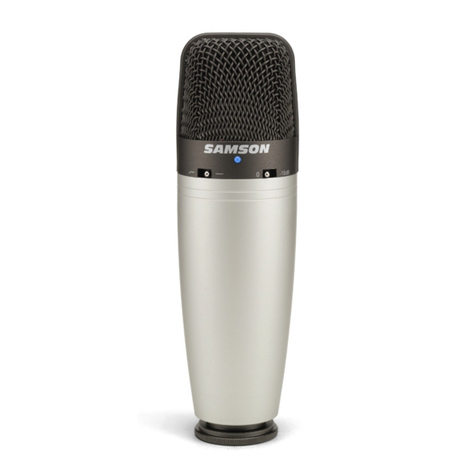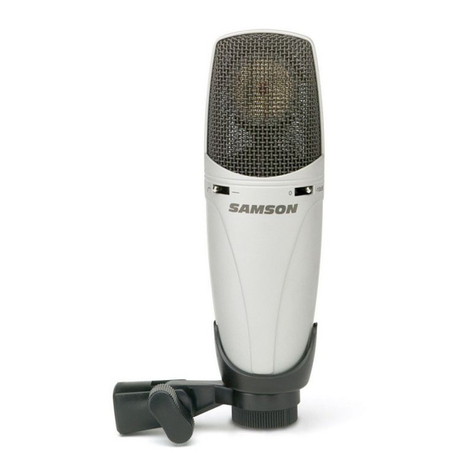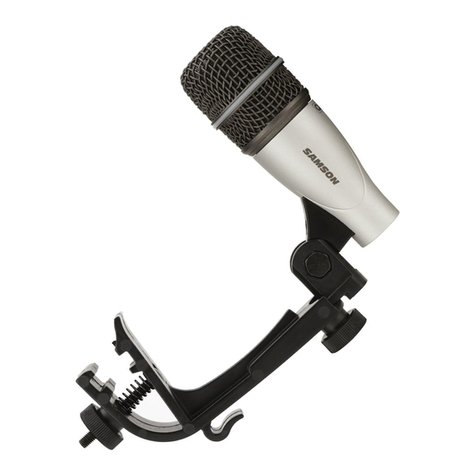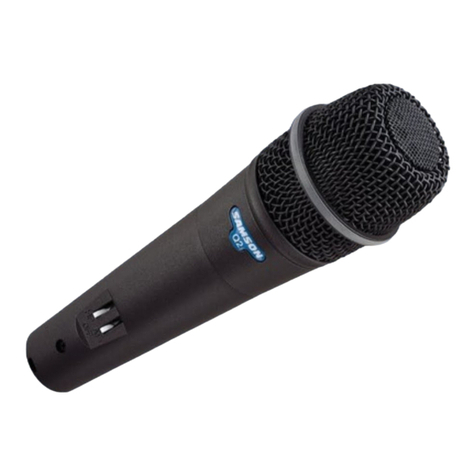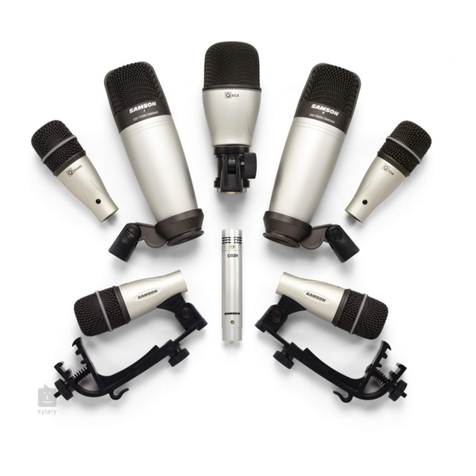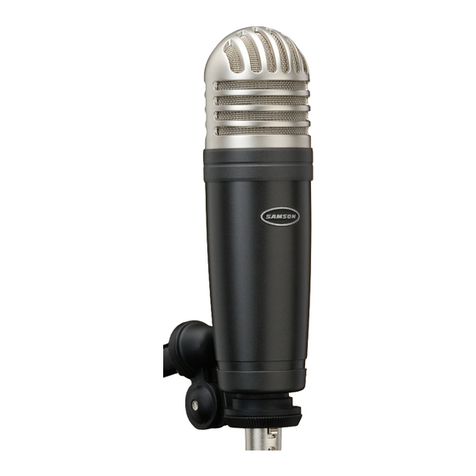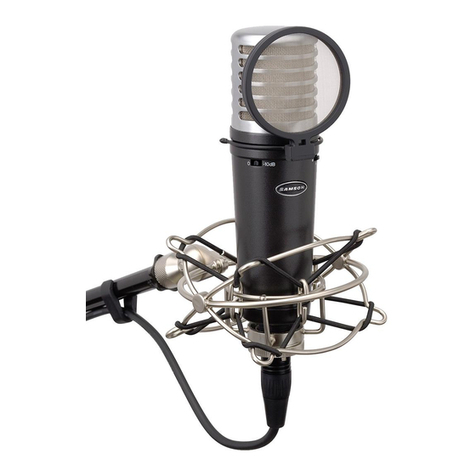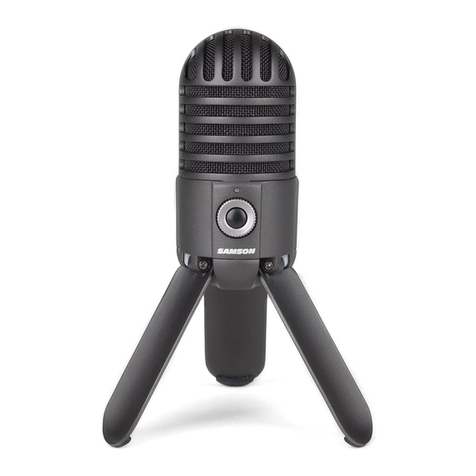
ENGLISH
ESPAÑOLITALIANO FRANÇAISDEUTSCHE
MTR201 Studio Condenser Microphone 7
In order to maximize the quality of the sound you are capturing, you must pay
careful attention to the placement of your MTR201 and how it is positioned for
the instrument or vocalist. The MTR201 is a unidirectional microphone, so it
exhibits a phenomenon known as “proximity effect” which is a resulting change in
the frequency response of a microphone based on the position of the microphone
capsule relative to the sound source. In order to get the best frequency response,
start by pointing the microphone directly on axis with the sound source. You can
change the sound characteristics that the microphone picks up by changing the
position of the microphone. Rotating the microphone away (off-axis) from the
sound source will decrease the sensitivity to higher frequencies. Experimentation
and experience is the best way to find out what sounds best for your recordings.
Below are some tips for when setting up and using your MTR201 in typical ap-
plications.
Vocals
Position the microphone directly in
front of the artist so that the micro-
phone grille is between 6 and 24
inches away. The closer the vocalist
moves to the microphone, the more
the bass or low response increases.
As the vocalist moves away from
the microphone, the tone becomes
more natural as the low frequency
rolls off. To achieve the fullest
sound, the vocalist should aim the
microphone center line towards their mouth. If some consonants such as ‘P’ and
‘S’ seem to jump up in level, rotate the microphone a little bit away from the art-
ist so that sound arrives at the microphone slightly off-center. It is preferable to
prevent these peaks through the use of the MPF1 external pop filter. If recording
a group of singers, ensure that they position themselves around the front of the
microphone close to one another.
Acoustic Guitar
There are a variety of ways that the MTR201 can be used to mike an acoustic
guitar. Optimal microphone placement will depend on the type of instrument, and
what kind of sound you’re looking to capture. It may be necessary to experiment
with various positions to achieve full and balanced tone. When miking a stan-
dard steel string acoustic, it is suggested that you begin with the microphone at
a distance of 6–12 inches from the sound hole, positioned slightly off-axis, and
pointing towards the edge of the fingerboard. From this position, moving the mi-
crophone towards the sound hole will cause the mic to capture more low frequen-
cies. If, instead, you wish to capture more high-end, or to remove any unwanted
booming sound, move the microphone toward the fingerboard. Unlike a steel
string acoustic guitar, the sound of a nylon string acoustic guitar that is played by
Microphone Placement
